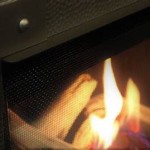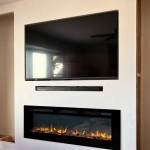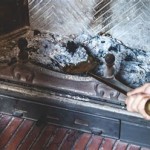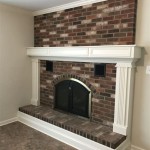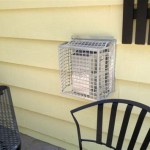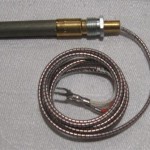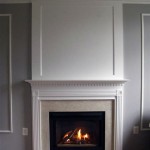Best Paint for Your Fireplace Box: A Comprehensive Guide
The fireplace box, also known as the firebox, is the heart of any fireplace. It's the compartment where the fire burns, enduring extremely high temperatures and harsh conditions. Selecting the right paint for this area is crucial, not only for aesthetic appeal but, more importantly, for safety and longevity. Standard paints are simply not designed for the intense heat and can lead to hazardous fumes, peeling, and even fire risks. This guide examines the best types of paint for fireplace boxes, factors to consider when choosing a paint, and the application process.
The primary function of paint in a fireplace box is to provide a protective coating against the corrosive effects of smoke, soot, and extreme temperatures. Without a proper coating, the metal or firebrick within the firebox can deteriorate, leading to cracks, warping, and ultimately, structural damage. Properly selected and applied paint can extend the lifespan of the fireplace, improve its efficiency, and enhance its overall appearance. It prevents rust and improves heat reflection within the box, aiding in better heat distribution.
Understanding Heat-Resistant Paint
Heat-resistant paint, also known as high-temperature paint or stove paint, is specifically formulated to withstand the extreme conditions found in a fireplace box. These paints are engineered to maintain their color, adhesion, and integrity even when exposed to temperatures ranging from 500°F to 1200°F (260°C to 650°C) or even higher, depending on the specific product. This is achieved through specialized formulations containing resins, pigments, and additives that can withstand thermal breakdown.
Unlike conventional paints, heat-resistant paints are often made with a silicone-based or ceramic-based formula. These materials create a durable and flexible coating that expands and contracts with temperature fluctuations without cracking or peeling. The pigments used are also heat-stable, meaning they won't fade or change color under high heat. Regular paints, on the other hand, are likely to blister, peel, and emit harmful fumes when exposed to such extreme conditions.
There are different types of heat-resistant paint available, each with its own specific properties and applications. The most common types include:
* Silicone-Based Paints: These are known for their excellent heat resistance, flexibility, and durability. They are often used on stoves, engine parts, and other high-temperature surfaces. * Ceramic-Based Paints: These offer superior heat resistance and hardness compared to silicone-based paints. They are ideal for applications where abrasion resistance is also a concern. * Epoxy-Based Paints: While generally not as heat-resistant as silicone or ceramic options, some epoxy-based paints are formulated for moderate heat applications. It's crucial to verify the heat tolerance rating before using epoxy paint in a firebox.Key Factors to Consider When Choosing Fireplace Box Paint
Selecting the best paint for a fireplace box requires careful consideration of several factors beyond just heat resistance. The specific material of the firebox, the type of fireplace, and the desired finish all play a critical role in determining the most suitable paint.
* Material of the Firebox: The material of the firebox, whether it's metal (typically cast iron or steel) or firebrick, will influence the type of paint that adheres best. Metal fireboxes generally require a paint that offers good corrosion resistance in addition to heat resistance. Firebrick, being porous, may require a primer or sealant to ensure proper adhesion and prevent the paint from being absorbed into the brick. Specifically, for firebrick, it’s necessary to choose paint that allows the brick to “breathe” and not trap moisture, which could lead to cracking of the brick itself. * Temperature Resistance: The paint must be rated for temperatures exceeding those expected within the firebox. It is often recommended to choose a paint with a temperature rating significantly higher than the maximum anticipated temperature to provide a safety margin. For wood-burning fireplaces, a paint rated for at least 1000°F (538°C) is generally recommended. Ensure the paint can withstand both continuous high heat and sudden temperature spikes. * Finish and Appearance: While functionality is paramount, the aesthetic appeal of the paint should also be considered. Heat-resistant paints are available in a range of finishes, including matte, satin, and gloss. Matte finishes are popular for their understated look and ability to hide imperfections, while gloss finishes offer a more reflective and easier-to-clean surface. The color selection is generally more limited compared to standard paints, but common colors like black, gray, and metallic tones are readily available. * Ease of Application: Consider the application method required for the paint. Some heat-resistant paints are available in aerosol cans for easy spray application, while others are designed for brush or roller application. Brush or roller application might be preferred for more controlled and precise coverage, especially in hard-to-reach areas. Always follow the manufacturer's instructions regarding surface preparation, application techniques, and drying times. * Durability and Maintenance: The selected paint should be durable enough to withstand regular use and cleaning. Look for paints that are resistant to chipping, scratching, and fading. A paint that is easy to clean will simplify maintenance and help keep the firebox looking its best. Regular cleaning with a soft brush and mild detergent can help remove soot and ash buildup. * Volatile Organic Compounds (VOCs): Consider the VOC content of the paint. Lower VOC paints are generally more environmentally friendly and release fewer harmful fumes during application and curing. This is particularly important for indoor applications where proper ventilation is crucial. If possible, opt for a low-VOC or zero-VOC heat-resistant paint.Preparing and Painting the Fireplace Box
Proper preparation and application are essential for achieving a durable and aesthetically pleasing finish. Thorough preparation ensures that the paint adheres properly and provides optimal protection. The following steps outline the recommended procedure for painting a fireplace box:
- Safety First: Before starting any work, ensure the fireplace is completely cool and disconnected from any gas or electrical supply. Wear appropriate safety gear, including gloves, eye protection, and a respirator, especially when working with paints containing solvents. Work in a well-ventilated area to minimize exposure to fumes.
- Cleaning and Surface Preparation: Thoroughly clean the surface to be painted, removing all traces of soot, ash, rust, and old paint. Use a wire brush, scraper, or sandpaper to remove loose debris and rust. For heavily soiled surfaces, a specialized fireplace cleaner or degreaser may be necessary. After cleaning, rinse the surface with water and allow it to dry completely.
- Masking and Protection: Mask off any areas that should not be painted, such as the surrounding brickwork or fireplace surround. Use painter's tape and drop cloths to protect nearby surfaces from overspray or drips.
- Priming (Optional): For firebrick surfaces or areas with significant rust, applying a heat-resistant primer can improve adhesion and provide a more uniform finish. Choose a primer specifically designed for high-temperature applications and compatible with the chosen paint. Allow the primer to dry completely according to the manufacturer's instructions.
- Applying the Paint: Apply the heat-resistant paint in thin, even coats, following the manufacturer's instructions. Avoid applying too much paint in one coat, as this can lead to runs, drips, and uneven drying. Allow each coat to dry completely before applying the next. Multiple thin coats are preferable to one thick coat.
- Curing: After applying the final coat of paint, allow it to cure completely according to the manufacturer's instructions. This may involve gradually increasing the temperature of the fireplace over a period of several hours to fully harden the paint. Refer to the paint's product data sheet for specific curing instructions.
By carefully selecting the appropriate heat-resistant paint and following proper preparation and application techniques, homeowners can ensure the safety, longevity, and aesthetic appeal of their fireplace box. Proper maintenance, including regular cleaning and inspection, will further extend the lifespan of the paint and the fireplace itself.

How To Paint A Fireplace Firebox Fox Hollow Cottage

How To Paint The Inside Of A Fireplace Simple Upgrade Maria Louise Design

How To Paint Inside A Fireplace An Updated Look Painting

Painting The Interior Of A Fireplace Shine Your Light

How To Paint The Inside Of A Fireplace Simple Upgrade Maria Louise Design

How To Paint A Brick Fireplace Young House Love

Paint The Inside Of Your Fireplace And Change Grout Color

Paint Inside Of Your Fireplace South House Designs

Paint Inside Of Your Fireplace South House Designs

Painting The Interior Of A Fireplace Shine Your Light
Related Posts

